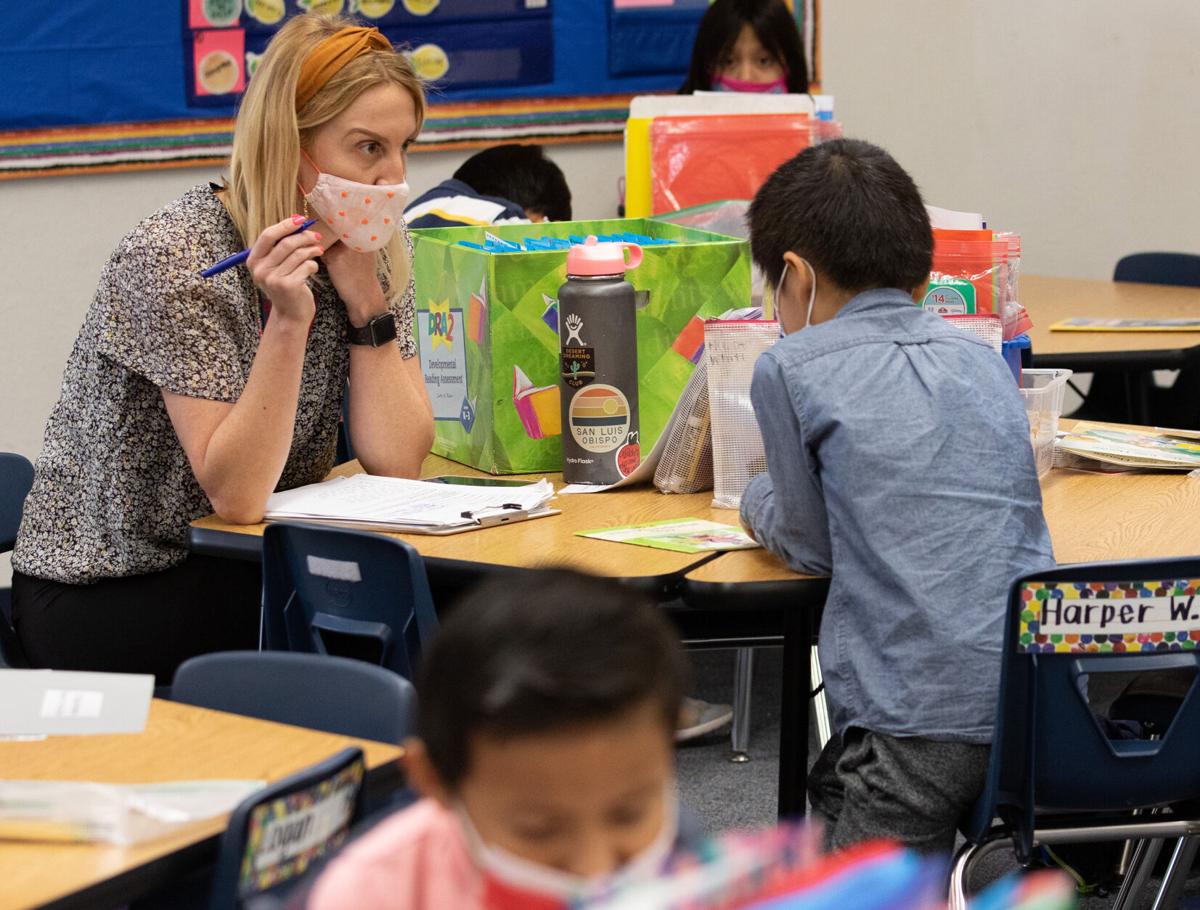PHOENIX — Arizona continues to have a shortage of teachers for the classroom.
And by some indications, the problem may be getting worse.
Schools in the state were able to fill fewer than one out of every five vacancies they had for this school year, a new survey by the Arizona School Personnel Administrators Association found. And 55% of those they did manage to fill were with people who are not actually certified educators.
This is the sixth year the organization has found a similar pattern. But Gov. Doug Ducey rejected the idea that things are the same as when they were when he took office in 2015.
“There’s a lot that’s changed since I’ve been governor,” he said.
“The focus on education has been in every state budget,” Ducey continued. And he specifically cited the average 20% pay hike given teachers.
But state schools chief Kathy Hoffman said it’s no surprise that the vacancy problem has remained relatively unchanged.
“One of the factors that has also remained consistent is that Arizona continues to rank 50th for teacher pay,” she said. Hoffman said that 20% pay hike “did not go far enough.”
“We needed a next step,” she said.
Hoffman said that could have been addressed in part by voter approval in November of Proposition 208. That 3.5% surcharge on individual incomes above $250,000 a year — $500,000 for couples — would have raised an estimated $827 in additional dollars, with half of that to hire teachers and classroom support personnel and to raise teacher salaries.
But the Arizona Supreme Court, ruling on legal challenges from some Republican lawmakers and business interests, have thrown the future of the levy into doubt.
And that financial issue, Hoffman said, is “overshadowing all of our efforts” to keep teachers in the classroom.
Ducey, in citing efforts to boost the number of people in the classroom, cited programs for “alternate pathways” to become a teacher other than going to a college of education. These are people who decide to make a mid-career change and seek to become teachers but don’t have to have a degree from a college of education.
Those alternate pathways did help, said Justin Wing, past president of the association who conducted the survey, but they make up only a portion of that 55% of non-certified people leading classrooms.
That category includes everything from people who are simply awaiting certification, teachers brought to Arizona from other countries through special visa programs, teachers brought into the state from foreign countries, and even college and university students who are being put in front of a classroom, alone, even before they have graduated.
There also were teachers brought in under a special visa program from other countries.
Yet the vacancy problem remains.
Even after bringing in people through alternate means, schools this year said 28% of the vacancies — 6,560 in the 145 school districts and charter schools that responded — are being dealt with through a combination of long-term substitutes, contracting out for certain services like special education and even combining classes to the point where the number of students exceeds the school’s class size limit.
In fact, in one category, things may be worse.
Wing’s survey found 160 teachers who simply did not report to work at the start of this school year. Last year the figure was 141.
And districts reported that another 124 simply abandoned their jobs since the start of the school year, compared with just 56 at the same time a year earlier.
Ducey, for his part, said none of this is unique to Arizona.
“There could be 48 other governors standing here that have a teacher shortage as well,” he said. “That’s something that is challenging the country.”
Ducey insisted, though that “Arizona is leading the country in addressing them.”
Wing said the long-term solution remains getting more high school graduates interested in making teaching a career.
Ducey said that is happening with the Arizona Teachers Academy, a program where students who go into education get one or more year’s worth of free tuition.
Wing said the problem with that is its marketing — or lack thereof.
“If you step into the door at a college of education at any local university or college, you will find out about the grant, probably,” he said. “And you may be eligible for it.”
But at the point a student is walking in the doors of a college of education, Wing said, that person already has decided or is at least considering teaching as a career.
“What about targeting graduates of Title I (high) schools?” he asked. Those are high schools with a big percentage of students coming from families in need.
Hoffman said she does believe there has been marketing of the program. But she said that also needs to be combined with other programs to get high schoolers interested in making teaching a career.





